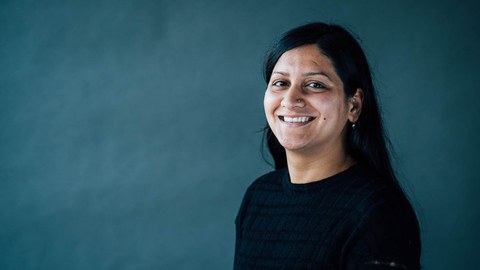Apr 28, 2021
Humboldt Research Fellowship for Dr. Gargi Joshi

Dr. Gargi Joshi
Dr. Gargi Joshi received Humboldt Research Fellowship for Postdoctoral Researchers. This prestigious fellowship will support Dr. Joshi over the next two years to continue her biomaterial research in the Politi group at the B CUBE – Center for Molecular Bioengineering.
“Researchers and engineers continuously look for inspiration in nature and use it to construct better materials from architecture to electronics to biomedical devices. In materials science and engineering, such an approach is known as biomimicking,” says Dr. Gargi Joshi. “I was always fascinated by natural design and patterns. Over the years biomaterials evolved because their structure and function mutually influenced each other. I want to explore this interplay, comprehensively understand the principles behind nature’s design and put those lessons into practice to develop better artificial materials.”
Focusing on the insect cuticle
One aspect that affects the properties of biomaterials is their water content, or hydration. Along with the specific architecture, hydration makes the material flexible and less prone to undergo an immediate fracture. Dr. Joshi wants to study this relationship focusing on the arthropod cuticle – the exoskeleton of an insect. The cuticle is multifunctional. It offers support – just as the skeleton, but it also offers sensing ability and protection from the outside – just as the skin does.
Structurally, the cuticle is composed of many layers. “Different factors can change the organization of these layers and impact mechanical properties of the cuticle. Water is one of such factors,” explains Dr. Joshi. “I would like to understand how water content affects the structure of a biomaterial from the molecular level.”
Developing the model
“I am excited about working with Prof. Yael Politi. She is an expert in the field. I have a lot to learn and explore,” explains Dr. Joshi. “In this project, I will use a lot of different instruments, some custom-built. In general, with all of our approaches we plan to be able to control the amount of water available and monitor mechanical properties of the cuticle, e.g., the tensile strength. Ultimately, we would like to gather enough data to build a model that determines the optimal amount of water within a particular cuticle. Such data can be an important stepping stone towards designing reconfigurable water-actuated materials.”
The international journey
Gargi comes from India but has moved to Dresden from Japan. She was a Japan Society for the Promotion of Science (JSPS) Fellow in Prof. Tatsuo Kaneko’s group at the Japan Advanced Institute of Science and Technology (JAIST) in Nomi, Ishikawa, Japan. Her work focused on polysaccharides, natural polymers that provide building blocks for bacterial colony film. Dr. Joshi devised a method to manipulate the arrangement of the polysaccharides to design film-like materials with properties tailored for a variety of applications, e.g., controlled drug delivery, tissue engineering, or soft robotics.
The Humboldt Research Fellowship for Postdoctoral Researchers is one of the most prestigious fellowships. It funds outstanding international scientists to perform research in Germany. Apart from the scholarship that will support Dr. Joshi over the next two years, she will also receive individual research funding from the Alexander von Humboldt Foundation and benefit from connecting with the network of Humboldt fellows worldwide.
